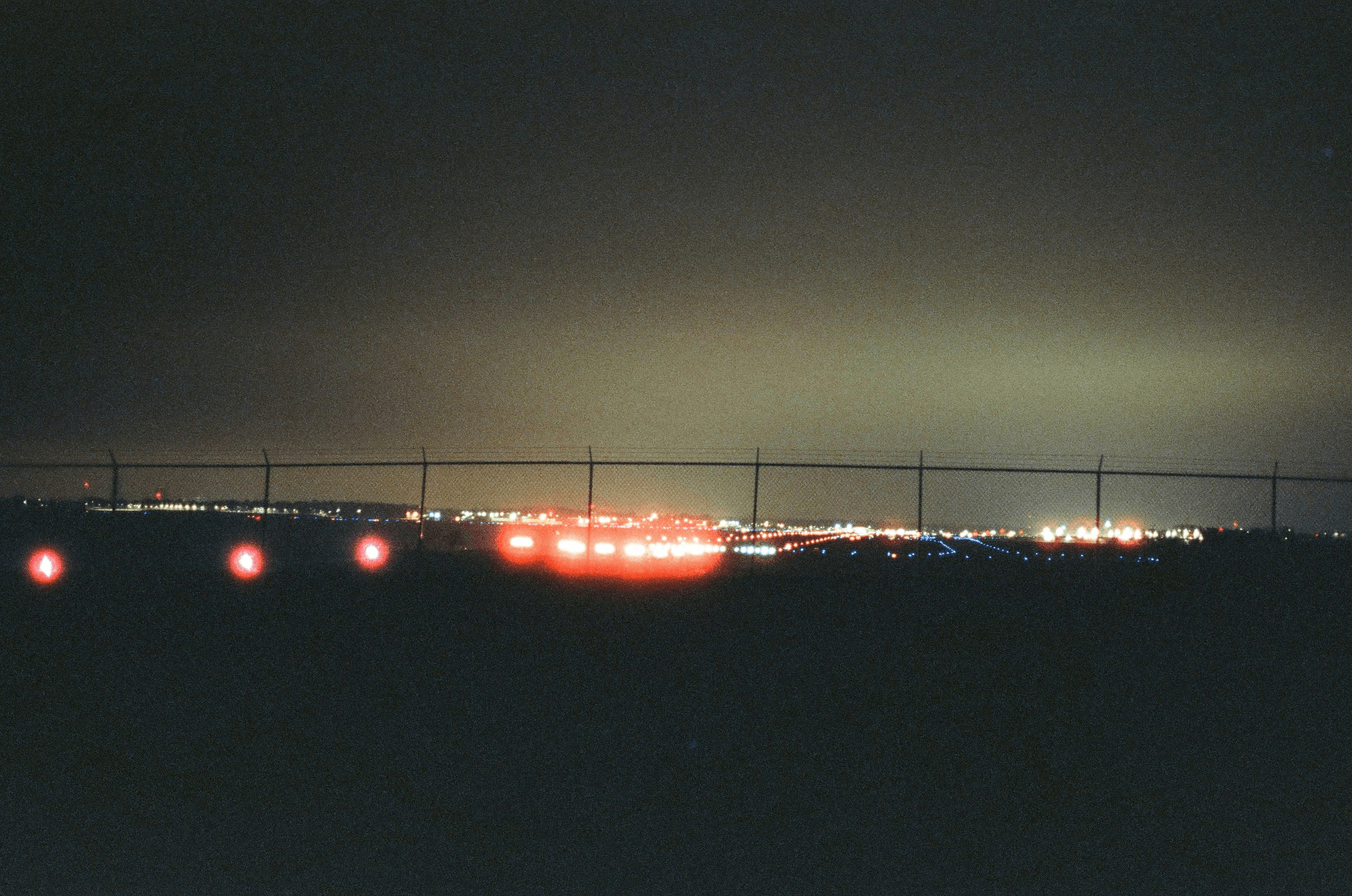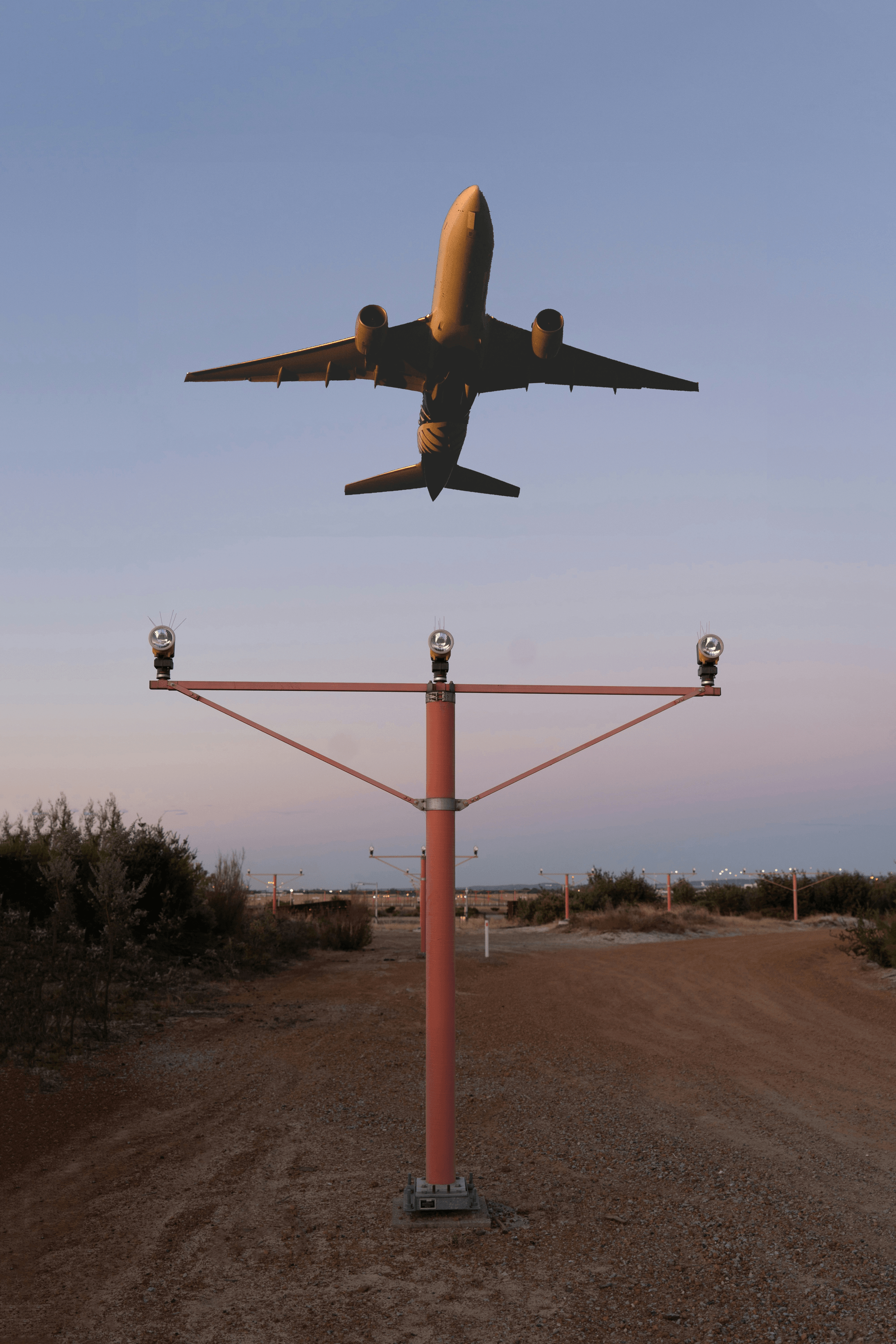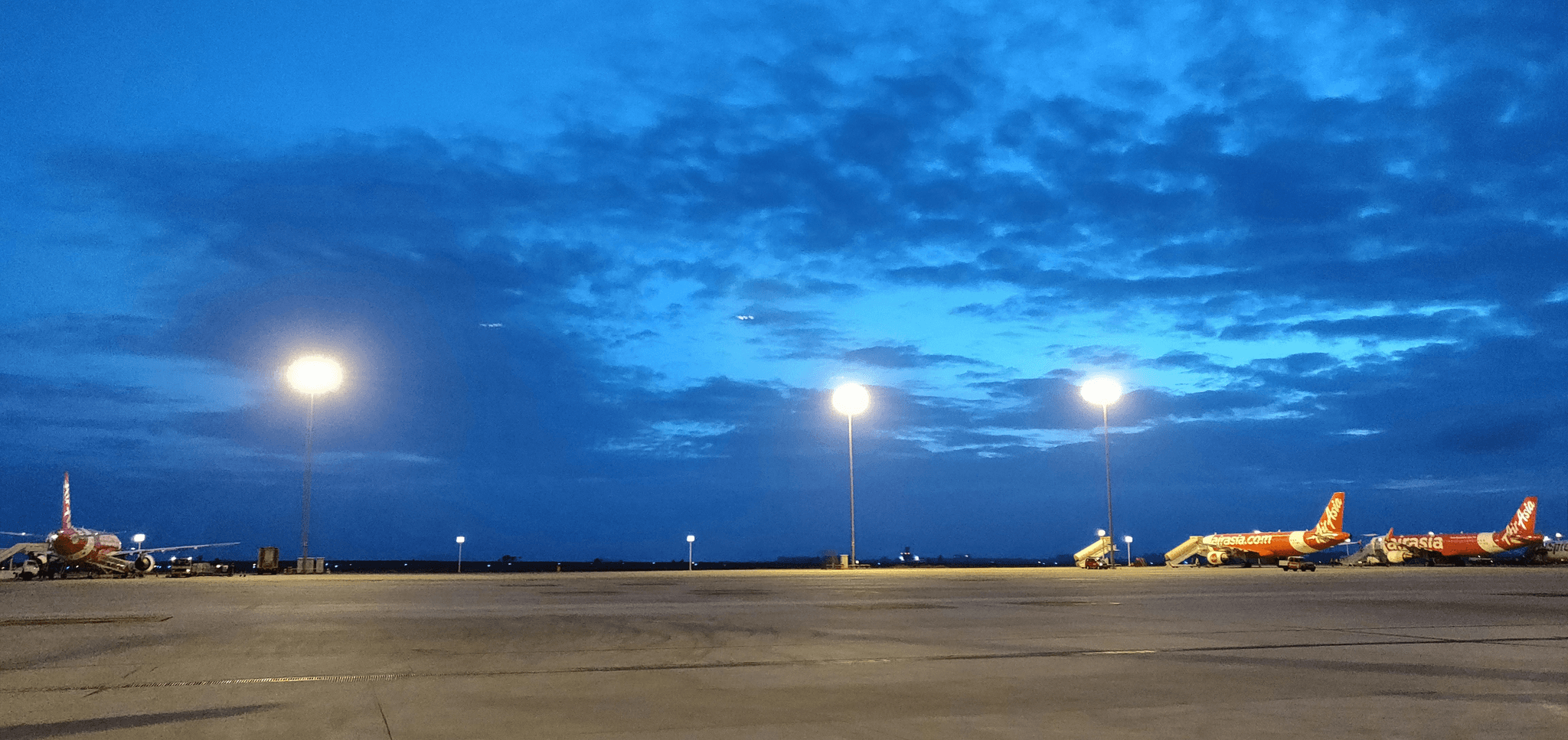Introduction

When it comes to aviation safety, understanding runway approach lighting is crucial. The intensity of runway lights plays a significant role in ensuring safe landings and takeoffs. With the advancement of technology, tools like Haisen's Light Intensity Tester have become essential for maintaining optimal lighting conditions.
Understanding Runway Approach Lighting
Runway approach lighting refers to the system of lights that guide pilots during the final stages of landing. These lights are strategically placed to provide visual cues for pilots, especially during low visibility conditions.
Importance of Runway Lighting Intensity
The intensity of runway lights determines their visibility and effectiveness in guiding aircraft. Proper lighting intensity is essential for pilots to accurately judge their approach and make safe landings.
Haisen's Light Intensity Tester
Haisen's Light Intensity Tester is a revolutionary tool used to measure the brightness of runway lights accurately. This device ensures that the lighting intensity meets aviation standards and helps maintain optimal visibility for pilots.
What Are Runway Edge Lights?

Runway edge lights are a crucial component of airport lighting systems, providing visual guidance to pilots during takeoff and landing. These lights help define the edges of the runway, allowing for safe navigation in low visibility conditions. They are typically installed along both sides of the runway, serving as a reference point for pilots as they approach or depart from the airport.
Role of Runway Edge Lights
The primary role of runway edge lights is to mark the edges of runways and taxiways, ensuring that pilots can easily distinguish between the paved surface and surrounding terrain. By providing a clear visual boundary, these lights help prevent runway incursions and guide aircraft safely along their designated paths. This is particularly important during nighttime operations or adverse weather conditions.
Visibility Enhancement
Runway edge lights significantly enhance visibility for pilots during takeoff and landing procedures, especially in low light or poor weather conditions. The consistent illumination provided by these lights allows pilots to maintain spatial orientation and alignment with the runway, reducing the risk of veering off course or experiencing disorientation during critical phases of flight.
Importance of Proper Placement
Proper placement of runway edge lights is essential to ensure optimal visibility and guidance for pilots. These lights must be strategically positioned along the entire length of the runway, maintaining uniform spacing and brightness levels to support safe operations. Additionally, effective coordination with other lighting systems such as approach lighting ensures seamless navigation for incoming and outgoing aircraft.
Remember that High Intensity Approach Lighting System (HIALS) plays a key role in enhancing visibility for pilots during critical phases of flight.
High-Intensity Approach Lighting System (HIALS)

Function of HIALS
The High-Intensity Approach Lighting System (HIALS) is a lighting system installed at the approach end of the runway. It consists of a series of light bars that provide visual guidance to pilots during the approach phase of landing, helping them align with the runway and maintain proper descent angles.
The High-Intensity Approach Lighting System (HIALS) also helps pilots in identifying the runway environment in low-visibility conditions, such as fog or heavy rain. By providing a clear visual reference point, HIALS enhances situational awareness for pilots, allowing them to make more informed decisions during the critical phase of landing. This ultimately contributes to safer and more efficient landings, reducing the likelihood of missed approaches or go-arounds.
Benefits for Pilots
For pilots, HIALS offers enhanced visibility during low-visibility conditions, such as fog or heavy rain. The bright lights help pilots identify the runway from a distance and maintain proper alignment, reducing the risk of overshooting or undershooting the runway during landing.
Additionally, HIALS can help pilots make more precise landings, reducing the likelihood of a hard or bumpy touchdown. This not only improves the comfort of passengers but also reduces wear and tear on the aircraft, leading to lower maintenance costs in the long run. Furthermore, by providing clear guidance during adverse weather conditions, HIALS can contribute to overall flight punctuality and reliability, benefiting both airlines and passengers.
Impact on Landing Safety
The installation of HIALS has significantly improved landing safety by providing pilots with better visual cues for safe landings in adverse weather conditions. The increased visibility and guidance offered by HIALS have contributed to reducing the number of runway incursions and improving overall aviation safety.
In addition to reducing runway incursions and improving overall aviation safety, the installation of HIALS has also enhanced the efficiency of airport operations. With better visibility and guidance for pilots, there has been a noticeable decrease in flight delays caused by adverse weather conditions. This has resulted in smoother air traffic flow and improved punctuality for both departing and arriving flights.
Medium Intensity Approach Lighting System (MALSR)

The Medium Intensity Approach Lighting System (MALSR) plays a crucial role in guiding pilots during the final stages of landing. It consists of a series of white lights that provide visual cues for the correct approach path, allowing for a smooth and safe touchdown.
Role of MALSR
The primary role of MALSR is to aid pilots in maintaining the correct glide path and alignment with the runway during low-visibility conditions. By providing clear visual references, it enhances situational awareness and allows for more precise landings, especially at airports with challenging terrain or environmental factors.
MALSR differs from High Intensity Approach Lighting System (HIALS) in that it specifically focuses on aiding pilots during low-visibility conditions, whereas HIALS is designed to enhance visibility and depth perception during approach and landing. While HIALS uses a combination of lights to create a visual glide slope for pilots, MALSR utilizes a sequence of white lights that extend along the approach path and change color to indicate distance from the runway threshold. This distinction makes MALSR particularly effective in guiding pilots through challenging weather conditions, such as fog or heavy rain, where maintaining the correct glide path and alignment with the runway can be especially difficult.
Comparison with HIALS
Compared to the High-Intensity Approach Lighting System (HIALS), MALSR offers a lower level of intensity but still provides effective guidance for pilots. While HIALS is typically used in more demanding visibility conditions, MALSR serves as a reliable option for airports with moderate visibility challenges.
Application in Different Weather Conditions
MALSR is designed to function effectively in various weather conditions, including fog, rain, and low light situations. Its adaptability makes it an essential component of airport lighting systems, ensuring that pilots have the necessary visual aids to navigate safely regardless of external factors.
Remember that proper lighting systems are essential for safe landings, and understanding the different types of approach lighting can help improve aviation safety and efficiency.
Low Intensity Runway Lighting

Low intensity runway lighting plays a crucial role in providing visual guidance to pilots during non-precision approaches. These lights are designed to enhance visibility and aid in safe landings, especially in adverse weather conditions. By using low intensity lighting, airports can ensure that pilots have the necessary visual cues to navigate the runway with confidence.
Importance of Low Intensity Lighting
Low intensity runway lighting is essential for airports as it allows for safe operations during low visibility conditions such as fog or heavy rain. These lights help pilots maintain spatial orientation and provide a reference point for their approach and landing. Additionally, they contribute to reducing the risk of accidents by ensuring that aircraft can safely maneuver on the runway.
Usage in Non-Precision Approaches
During non-precision approaches, where the aircraft's descent path is not fully guided by ground-based navigation aids, low intensity runway lighting becomes particularly valuable. These lights assist pilots in establishing their approach trajectory and aligning with the runway, ultimately leading to a smooth and safe touchdown.
Enhancing Visual Guidance
The use of low intensity lighting enhances visual guidance by providing a clear delineation of the runway edges and thresholds. This allows pilots to accurately judge their altitude and lateral position as they prepare for landing. By incorporating low intensity lighting into their airport systems, aviation authorities can significantly improve safety standards for all flights.
The Future of Airports Lights Systems

As technology continues to advance, so does the lighting systems used in airports. The advancements in lighting technology have led to the development of more efficient and durable runway lights, ensuring better visibility for pilots during takeoff and landing.
Advancements in Lighting Technology
New LED lighting technology has revolutionized airport lighting systems, offering brighter illumination and longer lifespan compared to traditional incandescent lights. These LED lights are also more energy-efficient, reducing the overall operational costs for airports while providing better visibility for pilots.
Additionally, LED lighting technology can be seamlessly integrated with smart systems to provide automated control and monitoring of airport lighting. This allows for real-time adjustments based on weather conditions, aircraft movements, and other factors, ensuring optimal illumination at all times. The integration with smart systems also enables airports to collect valuable data on lighting usage and performance, leading to further improvements in operational efficiency and safety.
Integration with Smart Systems
The future of airport lighting systems lies in their integration with smart systems. These smart systems can automatically adjust the intensity of runway lights based on weather conditions and aircraft approach, ensuring optimal visibility for pilots at all times.
The integration of smart systems with airport lighting also allows for the implementation of energy-efficient solutions. By automatically adjusting the intensity of runway lights, these smart systems can reduce energy consumption during periods of low aircraft activity or clear weather. This not only helps to lower operational costs for airports but also contributes to sustainability efforts by minimizing unnecessary energy usage.
Enhancing Efficiency and Safety
By embracing these advancements in lighting technology and smart system integration, airports can enhance both their operational efficiency and safety standards. The ability to adapt the intensity of runway lights based on real-time conditions can significantly reduce the risk of accidents during takeoff and landing.
With these advancements in lighting technology and smart system integration, airports are poised to enter a new era of enhanced safety and operational efficiency. The future of airport lighting systems holds great promise for improving aviation safety while ensuring smoother operations for pilots and air traffic controllers alike.
Conclusion

In conclusion, choosing the right lighting intensity for runways is crucial for ensuring safe and efficient landings. High Intensity Approach Lighting System (HIALS) and Medium Intensity Approach Lighting System (MALSR) play a vital role in enhancing visibility and guiding pilots during approach. Low Intensity Runway Lighting is essential for non-precision approaches, providing visual guidance in varying weather conditions.
Choosing the Right Lighting Intensity
When it comes to runway edge lights, it's important to understand that they typically have a medium intensity to provide clear visibility without causing glare or distractions for pilots. The selection of high, medium, or low intensity approach lighting systems depends on the airport's location, weather patterns, and the types of aircraft using the runway.
The intensity of runway edge lights is crucial for ensuring safe take-offs and landings, as it directly impacts visibility for pilots. In areas with frequent fog or low visibility due to weather patterns, high-intensity lighting may be necessary to guide pilots safely. On the other hand, in locations with minimal weather disturbances, medium or low intensity lighting may suffice. Additionally, the types of aircraft using the runway also play a role in determining the appropriate lighting intensity, as larger planes may require brighter lights for enhanced visibility.
Impact on Aviation Safety
The impact of high-intensity runway lights cannot be overstated when it comes to aviation safety. These lights significantly improve visibility during critical phases of landing, reducing the risk of accidents caused by poor visibility or misjudgment of altitude and distance. Properly calibrated lighting systems are essential for maintaining safe operations at airports.
High-intensity runway lights also play a crucial role in guiding pilots during adverse weather conditions, such as heavy rain, snow, or fog. These lights enable pilots to clearly see the runway and its surroundings, allowing for safe and accurate landings even when visibility is severely compromised. By providing a clear visual reference point, high-intensity runway lights help pilots maintain situational awareness and make informed decisions during challenging landing scenarios.
Embracing Advanced Light Testing Technology
As airports continue to evolve, embracing advanced light testing technology such as Haisen's Light Intensity Tester is crucial for ensuring that runway lights are functioning at their optimal levels. This technology allows for precise measurement of light intensity, ensuring that all runway lights meet required standards and contribute to safe landings.
Furthermore, by implementing advanced light testing technology, airports can also reduce maintenance costs and downtime associated with faulty runway lights. With precise measurement capabilities, the Haisen's Light Intensity Tester enables airport maintenance teams to quickly identify and address any issues with light intensity, preventing potential malfunctions that could disrupt air traffic. This proactive approach to maintenance not only enhances safety but also contributes to cost savings and operational efficiency for airports.
By understanding the importance of different intensities in approach lighting systems and embracing advanced testing technology, airports can enhance safety and efficiency in air travel while providing pilots with the necessary tools for successful landings.
